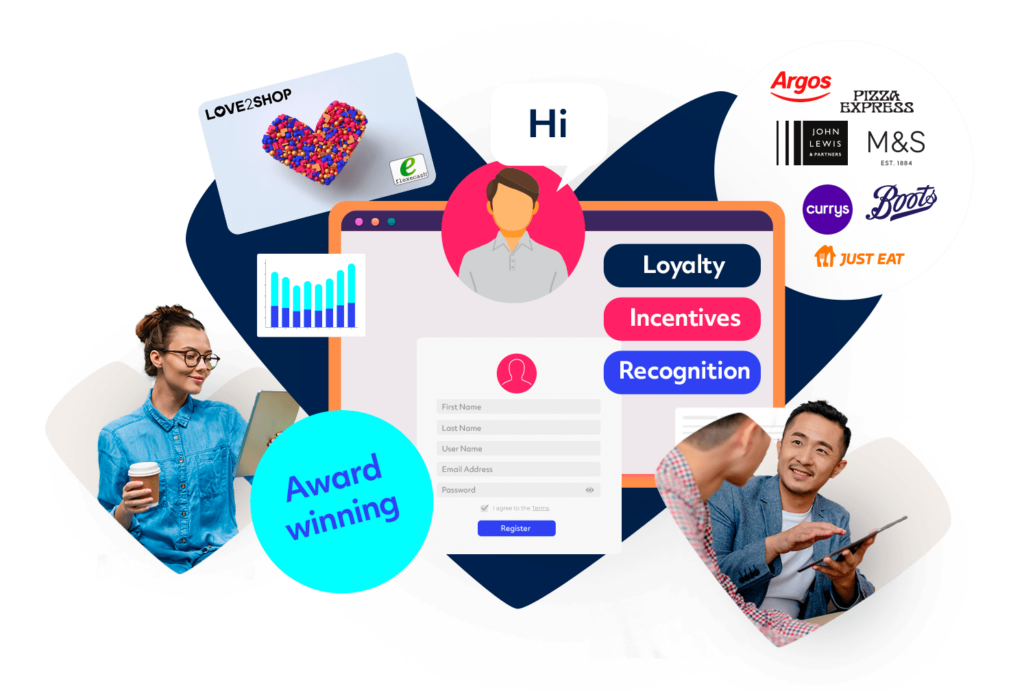What are employee Benefits?
In today’s competitive job market employee benefits play an important role in attracting and retaining top talent. It is now standard practice for all sorts of business to offer comprehensive employee benefits packages when they consider how to recruit talent with an attractive work environment.
This blog post explores employee benefits and their significance for both employees and employers. It also touches on the different benefits offered in the workplace. We’ll also discuss the importance of these benefits, from the perspective of both employees and employers.
Finally, we will highlight the legal considerations and requirements involved with offering employee benefits and provide insights into how employers can design and choose the most suitable benefits packages for their workforce.
But to start with…
What are employee Benefits?
Employee benefits are the additional perks and incentives provided by employers to their workforce, beyond regular wages or salaries. The best employee benefits are designed to boost the overall compensation package and provide employees with additional resources, support, and financial security.
Importance of Employee Benefits for Both Employees and Employers
Employee benefits are important for both employees and employers alike, contributing to a productive work environment.
Benefits for Employees include:
● Financial Security: Benefits like health insurance and retirement plans provide employees with financial protection against unexpected medical expenses and offer a sense of security for their future.
● Work-Life Balance: Benefits such as paid time off and flexible working allow employees to achieve a healthy work-life balance, leading to improved job satisfaction and overall well-being.
● Professional Growth: Training opportunities and professional development programs offered as benefits help employees improve their skills and advance their careers, contributing to their long-term success and job satisfaction.
Benefits for Employers include:
● Attracting and Retaining Talent: A generous benefits package serves as a magnet for attracting top talent. Potential employees often prioritise organisations that offer comprehensive benefits, making it easier for employers to recruit and retain the best people.
● Employee Satisfaction and Engagement: By providing valuable benefits, employers can improve employee satisfaction, leading to increased engagement, productivity, and loyalty within the workforce.
● Competitive Edge: Offering attractive benefits sets employers apart from their competitors. It positions the organisation as an employer of choice, giving them a competitive edge in the job market.
● Reduced Turnover and Recruitment Costs: When employees are satisfied with their benefits, they are more likely to stay with the organisation, reducing turnover and saving recruitment costs.
● Improving Productivity and Performance: When employees have access to healthcare, financial security, and professional development opportunities, they are more focused, motivated, and dedicated to their work. Employees who feel supported by their employer are more likely to go above and beyond in their performance, driving overall organisational success.
● Positive Company Culture: When organisations prioritise the well-being and satisfaction of their employees, it creates a supportive and caring environment. This fosters loyalty, trust, and a sense of belonging among employees, leading to higher levels of collaboration, teamwork, and overall employee morale.
By prioritising employee benefits, employers create an environment that nurtures their workforce, leading to long-term success and growth.
Health Insurance
● Medical Coverage: Comprehensive health insurance plans that cover medical expenses, including doctor visits, hospital stays, surgeries, and preventive care.
● Dental and Vision Plans: Benefits that provide coverage for dental treatments, such as cleanings, fillings, and orthodontics, as well as vision care, including eye exams, glasses, and contact lenses.
● Prescription Drug Benefits: Coverage for prescription medications, reducing out-of-pocket costs for employees when filling prescriptions.
Retirement Benefits
● Savings Programs: Savings programs help employees plan for their financial future and demonstrate a commitment to their long-term well-being. These programs may include options such as employer-matched savings plans, retirement savings contributions, or access to financial education resources. By facilitating savings, employers empower employees to build financial security and reduce stress related to money matters.
Retirement Benefits
● Savings Programs: Savings programs help employees plan for their financial future and demonstrate a commitment to their long-term well-being. These programs may include options such as employer-matched savings plans, retirement savings contributions, or access to financial education resources. By facilitating savings, employers empower employees to build financial security and reduce stress related to money matters.
Paid Time Off
● Vacation Leave: Time off granted to employees for rest, relaxation, and personal activities, allowing them to take a break from work and rejuvenate.
● Sick Leave: Paid time off to address personal illness, injury, or medical appointments, ensuring employees can prioritise their health without financial burden.
● Holidays and Personal Days: Designated days off for recognised holidays, as well as additional personal days that employees can take for their own needs or special occasions.
Insurance Coverage
● Life Insurance: Protection for employees’ loved ones in the event of their death, offering a financial benefit to designated beneficiaries.
● Disability Insurance: Income protection if an employee becomes disabled and unable to work due to illness or injury, providing a percentage of their salary during the disability period.
Benefits Beyond Traditional Offerings
1. Remote Work and Flexible Schedules
The rise of remote work has become increasingly popular, providing employees with flexibility in their work location and schedule. Remote work options allow employees to achieve a better work-life balance, reduce commuting time and expenses, and potentially increase productivity.
2. Employee Assistance Programs (EAPs)
EAPs offer confidential counselling services and resources to support employees with personal or work-related challenges. These programs provide assistance for mental health issues, stress management, financial concerns, substance abuse, and more, promoting overall employee well-being.
3. Wellness Programs
Wellness programs focus on promoting employee health and well-being. They often include initiatives such as fitness classes, health screenings, wellness challenges, stop-smoking programs, and access to mental health resources. By encouraging healthy habits, employers can reduce healthcare costs, enhance productivity, and foster a positive work culture.
4. Professional Development and Training Opportunities
Investing in professional development and training shows employees that their growth and career advancement are valued. Opportunities for skill development, workshops, seminars, certifications, and mentorship programs not only benefit employees but also contribute to the overall expertise and effectiveness of the workforce.
5. Child Care Assistance
Child Care assistance programs, such as subsidised daycare or on-site childcare facilities, help employees balance work and family responsibilities. These benefits lighten financial burdens and provide peace of mind, enabling employees to focus on their job knowing that their children are well-cared for.
6. Employee Discounts and Perks
Employee discounts and perks create added value for employees. These may include discounts or vouchers on products or services offered by the company or partnering businesses, gym memberships, entertainment tickets, transportation benefits, or access to exclusive events. Such perks boost employee morale and satisfaction.
7. Stock Options and Equity
Stock options and equity grants provide employees with the opportunity to own a stake in the company. This aligns their interests with the organisation’s success and can serve as a valuable financial incentive. Employees who become shareholders have a vested interest in driving the company’s growth and performance.
8. Compassionate Leave
Compassionate leave is an important benefit that provides employees with time off to deal with personal emergencies or bereavement. This benefit shows empathy and support during challenging times, allowing employees to focus on their well-being and the needs of their families. Compassionate leave policies vary by company, but they typically provide paid time off to address such situations.
9. Period Policy
A progressive and inclusive benefit, a period policy acknowledges the unique needs of individuals who menstruate. It may include provisions such as flexible working hours, additional breaks, access to sanitary products, and supportive policies to alleviate the challenges and discomfort associated with menstruation. Implementing a period policy demonstrates an understanding and support for employees’ menstrual health and well-being.
10. Extended Parental Leave
Extended parental leave benefits go beyond statutory requirements, allowing employees to spend more time with their newborn or newly adopted child. This benefit recognises the importance of work-life balance and supports employees in their transition to parenthood. By offering extended parental leave, employers promote family bonding and support the overall well-being of their employees.
11. Free Breakfast
Providing a free breakfast is a perk that promotes a positive work environment and fosters employee well-being. Starting the day with a nutritious meal can enhance productivity, boost energy levels, and encourage healthy eating habits. It also fosters a sense of camaraderie as employees gather and interact in a relaxed setting, strengthening team dynamics.
12. Cycle to Work Scheme
A cycle-to-work scheme promotes physical health and sustainability by encouraging employees to commute by bicycle. This benefit typically involves offering employees the opportunity to purchase bicycles and related equipment through salary sacrifice arrangements, which can result in tax savings. By supporting active commuting, employers contribute to their employee’s well-being, reduce carbon emissions, and promote a healthier lifestyle.
13. Retreats
Retreats offer employees a chance to recharge, bond with colleagues, and engage in personal and professional development. These organised getaways can range from team-building exercises to workshops, training sessions, or wellness retreats. Retreats provide an opportunity for employees to step away from their daily routines, foster connections, and gain new insights, ultimately boosting morale and motivation.
By offering benefits beyond traditional offerings such as compassionate leave, savings programs, cycle-to-work schemes, etc, employers demonstrate their commitment to holistic employee well-being, inclusivity, work-life balance, and personal development. These benefits contribute to a positive work culture, attract top talent, improve employee retention rates, and enhance overall organisational success.
How Much Do Benefits Cost a Company?
Determining the cost of employee benefits is a crucial
aspect of managing a company’s budget and financial planning. The actual cost
of benefits can vary significantly depending on various factors, including the
size of the workforce, industry norms, benefit offerings, and employee
utilisation.
Some key considerations when assessing the cost of employee
benefits include:
1. Benefit Offerings: The specific benefits offered by a company greatly impact the overall cost. Comprehensive benefit packages that include health insurance, retirement plans, paid time off, and additional perks will typically incur higher costs compared to more basic benefit packages. Employers must carefully evaluate the value and relevance of each benefit offered to strike a balance between attracting and retaining talent and managing costs effectively.
2. Employee Utilisation: The utilisation of employee benefits also influences the cost to the company. For instance, health insurance costs can vary based on factors like the number of employees enrolled, the frequency of medical visits, and the types of coverage provided. Similarly, the cost of retirement benefits may depend on the employer’s matching contributions and the participation rate of employees in the retirement plan. Analysing historical data and monitoring utilisation trends can help companies forecast and manage benefit costs more effectively.
3. Industry and Market Factors: The industry in which a company operates and the surrounding market conditions can impact benefit costs. In highly competitive industries where talent acquisition and retention are critical, companies may need to offer more generous benefit packages to remain competitive. Additionally, economic factors such as inflation, healthcare costs, and regulatory changes can influence benefit costs over time.
4. Administrative Expenses: Companies must also consider administrative expenses associated with managing and maintaining employee benefits. These costs include HR personnel, technology systems, compliance monitoring, and communication materials. Investing in efficient benefit administration systems and streamlining processes can help minimise administrative costs and improve cost-effectiveness.
5. Cost-Sharing and Employee Contributions: Many companies require employees to contribute a portion of the cost of their benefits through payroll deductions. Cost-sharing strategies, such as premium sharing for health insurance or employee matching for retirement plans, can help mitigate the overall financial burden on the company. Employers must strike a balance between providing meaningful benefits and implementing cost-sharing measures to manage expenses effectively.
It is important to note that benefit costs can fluctuate over time due to various factors, including changes in benefit design, regulatory requirements, and market dynamics. Regular evaluation and reassessment of benefit programs allow companies to optimise their offerings while managing costs efficiently.
UK Legal Considerations and Compliance
Employers in the UK must have an in-depth understanding of employment laws and regulations to ensure legal compliance and avoid potential legal issues. These laws cover various aspects, including employment contracts, working hours, minimum wage, discrimination, health and safety, and termination of employment.
Understanding and adhering to these laws is important to protect both employers’ and employees’ rights.
In addition to employment laws, there are other relevant laws and regulations that employers in the UK must consider relating to employee benefits. Some key areas to be aware of include:
● Equality Act 2010: This legislation prohibits discrimination based on protected characteristics, such as age, gender, disability, race, religion, or sexual orientation. Employers must ensure their benefits packages do not discriminate against any protected groups.
● Data Protection Act 2018 and General Data Protection Regulation (GDPR): These regulations govern the collection, processing, and storage of personal data. Employers must handle employee data in compliance with these laws, ensuring data security and obtaining appropriate consent when necessary.
● Pensions Act 2008: This act introduced automatic enrollment in workplace pensions for eligible employees. Employers must comply with the requirements, including providing access to pension schemes, making contributions, and meeting reporting obligations.
● National Minimum Wage and National Living Wage: Employers must ensure they pay employees at least the minimum wage rates set by the government, which vary based on age and whether the employee is an apprentice.
● Health and Safety at Work Act 1974: Employers have a legal duty to ensure a safe working environment for their employees. This includes providing a safe workplace, and appropriate equipment, and implementing health and safety policies and procedures.
By staying informed about UK employment laws and regulations, employers can navigate the legal landscape surrounding employee benefits. It is recommended to consult legal professionals or seek advice from relevant government bodies to ensure compliance and mitigate any potential risks.
How Employers Choose and Design Benefits Packages
Assessing Employee Needs and Preferences
Employers must assess the needs and preferences of their employees when designing benefits packages. This includes conducting surveys, holding focus groups, and gathering feedback to understand what types of benefits are most valued and desired. By considering employee input, employers can tailor their benefits packages to meet the specific needs of their workforce.
Considering Industry Standards and Competitors
Employers should research industry standards and competitors to ensure their benefits packages remain competitive. Analysing what benefits other companies in the same industry offer can help employers benchmark their offerings and make informed decisions about the types of benefits to include. This allows them to attract and retain top talent by staying on par with industry norms.
Cost Analysis and Budgeting
Cost analysis and budgeting play an important role in designing benefits packages. Employers must evaluate the financial implications of offering different benefits and determine what they can afford based on their budget. Balancing the desire to provide comprehensive benefits with financial feasibility is essential to create sustainable and cost-effective packages.
Consulting with Benefits Providers or Brokers
Engaging with benefits providers or brokers can provide valuable expertise and guidance during the design process. These professionals have in-depth knowledge of the market and can help employers understand available options, negotiate pricing, and select the most suitable benefits providers. Collaborating with experts ensures employers make informed decisions that align with their goals and budget.
Communication and Employee Education
Clear communication and employee education are essential when introducing or updating benefits packages. Employers should effectively communicate the details of the benefits package, including eligibility requirements, enrolment processes, and any changes. Providing educational resources, such as workshops, webinars, or informational materials, helps employees understand and appreciate the value of the benefits offered.
By considering all of the above, employers can design benefits packages that attract and retain top talent while aligning with their budget and strategic goals.
In conclusion…
By providing competitive benefits packages, employers create a positive work environment that attracts top talent, and boosts employee satisfaction, and engagement. Satisfied employees are more likely to be productive, loyal, and motivated, leading to improved business performance.
Remember, regularly assessing and adapting benefits packages to align with evolving employee needs is essential. By staying informed about industry trends, complying with relevant laws and regulations, and seeking employee feedback, employers can continue to enhance their benefits offerings and maintain a competitive edge in attracting and retaining top talent.
Don’t miss out on the opportunity to create a positive work environment and gain a competitive edge. Check out our business page for amazing employee benefits offerings for your staff.
Love2shop Gift Cards
Love2shop Gift Cards are accepted in 90+ brands across the UK.
They are the perfect thank you gift for employees or customers.
For orders over £10,000
For orders under £10,000

Online and in-store digital Mastercard
Love2shop Contactless makes the process of managing rewards and recognition easy, instant and digital.
Secure bulk ordering to reward your employees and customers.
For orders over £10,000
For orders under £10,000

Love2shop e-Gift Cards
Sent and redeemed online, a Love2shop e-Gift Card lets a customer or employee pick their reward from a selection of popular shopping, dining, and experience brands.
For orders over £10,000
For orders under £10,000

Love2shop Gift Vouchers
Always popular, Love2shop Gift Vouchers are ideal for employee rewards, staff incentives, corporate gifts, sales promotions, research incentives, and referral schemes.
For orders over £10,000
For orders under £10,000

Love2shop Holidays Gift Cards
Love2shop Holidays Gift Cards can be used as full or part-payment towards holidays around the world, or at home in the UK.
Nothing inspires quite like travel, and a Love2shop Holidays Gift Card puts that power in your hands.
For orders over £10,000
For orders under £10,000

Love2shop Engagement Platform



